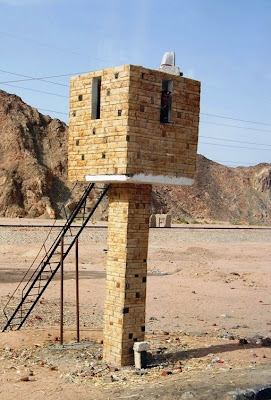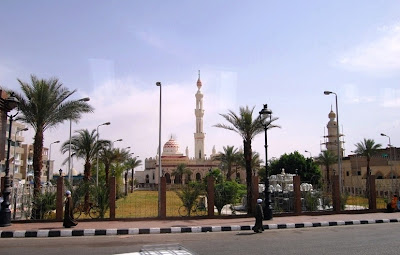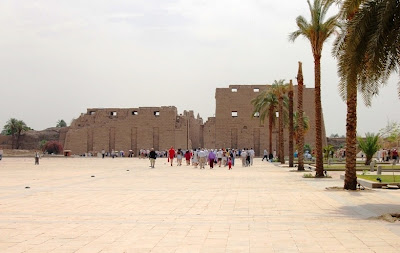Monday, June 18, 2012
Wednesday, June 13, 2012
Millennium of Luxor.
The way from Hurghada to Luxor passes through the desert to the Nile.
The donkey and the goat - friends forever.
Сheckpoint. In Egypt, forbidden to photograph the police.
The fertile Nile Valley. A small stream, which occupies less than 5% of the feeding area of the country and all.
Such beauty is adjacent to ...
...these slums
Karnak Temple
In the temple walkway leading sheep - a symbol of the supreme God - Amon Ra
Monday, June 11, 2012
Caesarea. First sight.
Very, very long time (about the middle of III century BC) to the shore blue Mediterranean Sea came the Phoenicians. They built a small settlement, called it the Tower of Straton and about 200 years lived peacefully and happily under the rule of the Persians at first, and then the Greeks. Plundered a little, trading and fishing. In general, behaved like all decent people of the Mediterranean.
But happiness is not eternal, and in the II century BC settlement took the king and high priest Alexander Jannaeus, who as much as 30 years have included it in the Hasmonean kingdom. Even after several decades in the places the Roman general Pompey looked and won the Tower of Straton, along with the rest of Judea. As time went on, the concept of nation-building in the Roman Empire changed in 31 BC Octavian emperor of Rome, the Jewish settlement in August gave King Herod - the same one who was going to be Great. Everyone has a dream. A dream of Herod the Great was a port city, the best in the Mediterranean. And in 10 BC it will become a small village into a major port city, named in honor of (what a surprise!) of Emperor Augustus - Caesarea. Well, and, accordingly, was in this city, as noted by Josephus, the remarkable beauty and magnitude of the Temple of Augustus, with its colossal statue, is not inferior to his model of the Olympic Zeus.
Lighthouse, a large harbor surrounded by walls with breakwaters, wharves and quays, warehouses, shops, temples, and the racetrack, the streets paved with stone slabs and fountains, sculptures and gardens, aqueducts and urban sewage. In this city was all. No wonder after the death of Herod, Caesarea became the administrative center of the Rome prosecutor in the West and the base of the Roman legions. From there they went to suppress the revolt of the Jews, and here the prisoners were brought to punishment, and sales. And it was after the defeat of Jerusalem, Caesarea became the capital of Palestine.
Today the National Park Reserve, Caesarea, are active archaeological digs. A considerable part of them is under water. Theatre. Was built during the reign of Herod the king, and acted for hundreds of years, until the Byzantine era. The theater has two tiers and has approximately 4,000 seats. Behind the scenes perfectly positioned wall design, which relied on the column, the height of three stories and was the backdrop for the stage.
Palace on the reef. It is ruins of a beautiful palace with a swimming pool in its western part, which belongs to the Byzantine and Roman eras. Scientists believe that the pool was used as an urban fish market.
Amphitheater of King Herod. The building, which is intended for public amusements, with tiers of the arena and, in the form of an elongated U. The amphitheater was built in the days of Herod, and intended for entertainment performances and sports competitions, chariot races in Roman times. First, the building consisted of twelve rows and seats, and can hold more than 10,000 spectators.
The complex of buildings common bath. A very large complex and luxuriously decorated. Baths were constructed on the site of Herod's amphitheater, and even in their ruins can be seen the importance of baths in the Empire.
Administrative and economic area. The southern part of the construction of the Byzantine and Roman eras. A large part built on arches, which were intended for storage.
Monday, June 4, 2012
Red Canyon. Israel.
Just 15 kilometers north of Eilat, is a surprisingly beautiful place - Red Canyon. It stretches for 200 meters and a depth of 30 meters. Red Canyon is situated at an altitude of 700 meters above sea level. The name comes from the canyon reddish-pink color of one of the sandstone rock, which is the main natural product of local mountains.
Subscribe to:
Posts
(
Atom
)


















.jpg)
.jpg)
.jpg)
.jpg)
.jpg)
.jpg)
.jpg)
.jpg)
.jpg)
.jpg)
.jpg)
.jpg)
.jpg)
.jpg)
.jpg)
.jpg)






